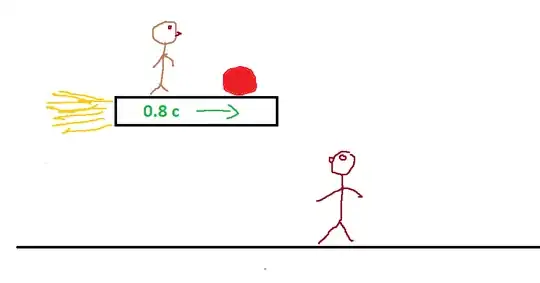(This is a quick one)
Suppose Im standing still (in my perspective) and a hoverboard is flying at $0.8c$ w.r.t me.
I see that the ball (red) is moving at $0.8c$. I measured earlier that the ball is $15$ kg, before it went on the hoverboard. So, its 'rest mass' is $15$ kg for me. But, when its on the hoverboard, its mass will be the 'relativistic mass' $m = γm$ (rest mass), which will be $25$ kg.
So, if I get on the hoverboard, and measure the mass of the ball, will I measure it to be $25$ kg, or $15$ kg?
i.e Is the 'rest mass' (or 'mass measured when object is rest in my frame') same in both cases or not?
